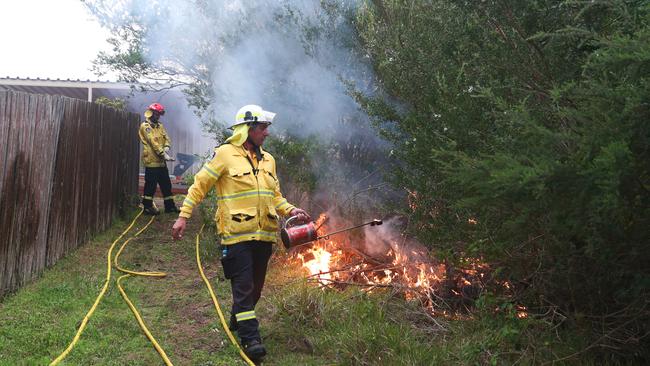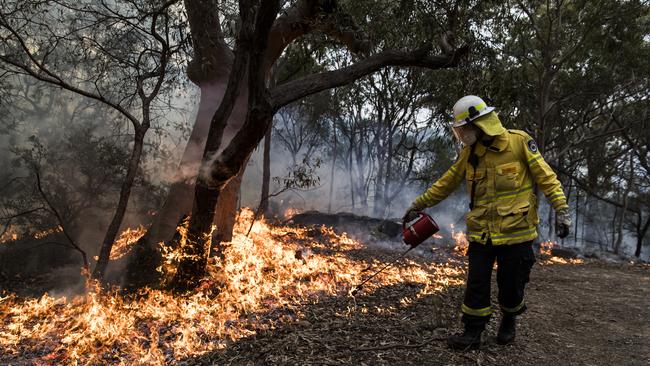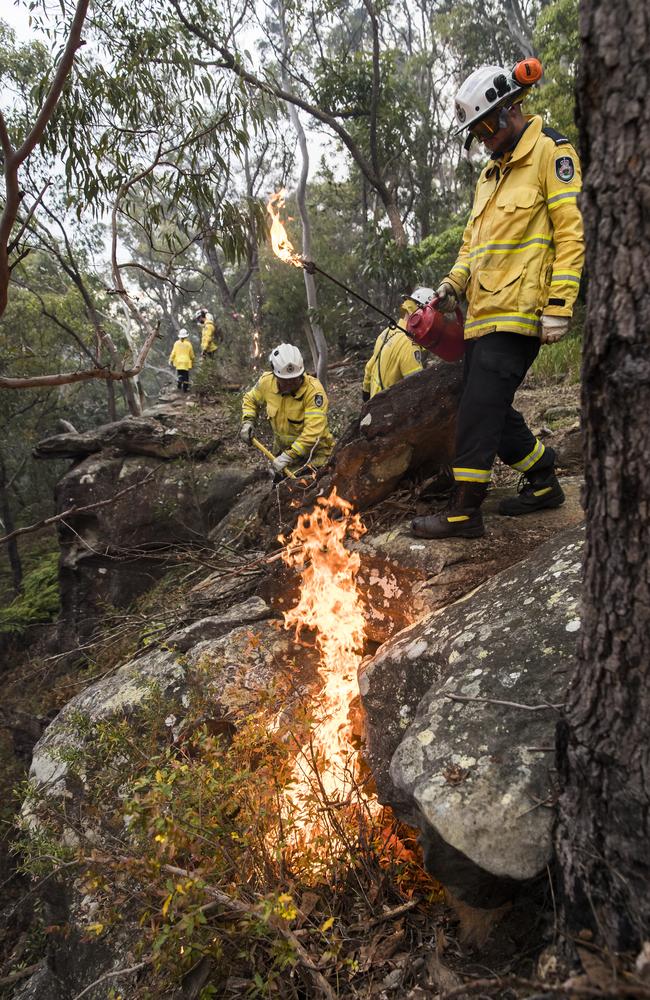Smoke haze to blanket Sydney as fireys conduct hazard reduction burns
A forecast for mostly dry days next week has sparked a rush of hazard reduction burns across the state, including some just metres from suburban Sydney homes. This comes as only about 30 per cent of this year’s scheduled burns have been completed so far.
NSW
Don't miss out on the headlines from NSW. Followed categories will be added to My News.
- ‘Fix the trucks’: Broken gear makes fireys fear next season
- Would you let your home burn down to the ground?
Firefighters are furiously torching scrub around Sydney after a wet autumn and winter put hazard reduction burns badly behind schedule.
The wettest autumn since 2012 and more rainy winter days than normal have hamstrung firefighters, who have conducted only 30 per cent of this year’s scheduled hazard reduction burns.
A forecast for mostly dry days next week has sparked a rush of burns across the state, including some just metres from suburban homes.
In line with the recommendations from an inquiry into last summer’s devastating bushfires, crews this week set fire to undergrowth near homes around Hornsby, the northern beaches, Blue Mountains, Port Stephens, Lake Macquarie, the Hawkesbury, Southern Highlands as well as inland at Griffith and Moree.

It recommended controlled burns should be increased, better targeted and take place closer to vulnerable towns and communities.
GET MORE CONNECTED:
What you get as a subscriber to The Daily Telegraph
Download our app and stay up to date anywhere, anytime
The Rural Fire Service (RFS) has burns planned for next week along the entire NSW coast from Bega to the Queensland border.

“It is concerning we missed the opportunity for hazard reduction burns during autumn, which is when we usually get the majority of burns done,” RFS spokesman Ben Shepherd said.
“We want to catch up and this is our opportunity now. Over the coming weeks people can expect to see and smell smoke.”
There had already been more than 4000 blazes across the state by this time last year, compared to just 1300 bush, grass or scrub fires since July this year.
More than 3000 homes were destroyed and 34 people killed during five months of bushfires from October last year to February.

While wet weather has given firefighters the upper hand, there is concern a hot summer spell could quickly reverse the good fortune.
“If the rainfall was maintained across summer then we are less likely to see significant fire events, but we don’t want people to be under the illusion there is no threat,” Mr Shepherd said.
“With a warm, dry and windy week in places like Sydney, there is potential for fires in the landscape.”
The biggest concern is fast-moving grassfires west of the Great Dividing Range, where large swathes of the state have recorded the best grass and crop growth since 2016.

